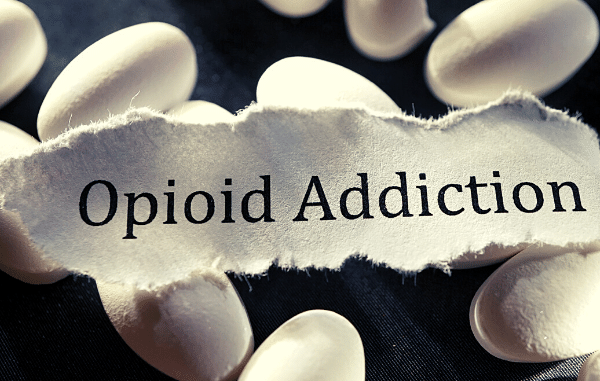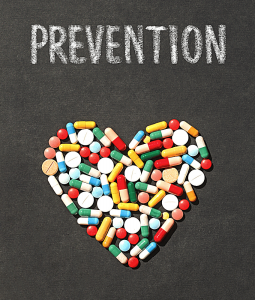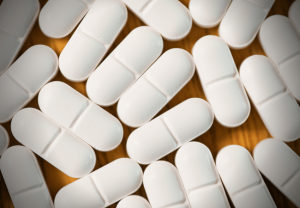
A Brief History of Opioid use in the USA
Civil War Use
In the early 1860s, the United States began using opioids to relieve pain as a way of treating wounded soldiers. Many of these soldiers developed dependence and addiction to morphine in the years that followed the war.
The Advent of Heroin
The Bayer Company introduced heroin to the market in 1898. They claimed that it was more effective and was less habit-forming than morphine.
restrictions on narcotics lifted
The U.S. placed restrictions in the 1910s-1920s on opioids and other narcotics. They also required that prescriptions be written, as well as outlawing heroin.
Law on Controlled Substances
Flash forward to the 1970s and the Controlled Substances Act becomes law. It divides groups based on their likelihood of abuse into various groups and imposes regulations based on each class.
OxyContin appears on the Scene
Purdue Pharma launched OxyContin in 1995 as an alternative to oxycodone. This was intended to be a more gentle and addictive opioid pill. This and other opioids would be prescribed more frequently by doctors over the next 20 years, increasing the risk of addiction.
Anybody who uses opioids is at high risk of developing an addiction. While your history of opioids and the length of time that you have used opioids play a part, it is impossible to predict who will eventually become dependent on these drugs. These drugs are responsible today for most overdose deaths in America. They can be legal or illegal, stolen, and shared.
Addiction refers to a state in which something once pleasurable becomes something you cannot live without. Dr. David Deutsch defines drug addiction as an insatiable craving for a drug and out-of-control and compulsive use. This can also include continued use despite the negative consequences. Because opioids activate your brain’s reward centers, they are addictive.
Your brain’s neurotransmitters that make you feel good, endorphins are released when you take opiates. Endorphins can temporarily reduce your pain perception and increase feelings of pleasure. This creates a powerful feeling of well-being. You may feel the need to have those positive feelings back as soon as your opioid dose is finished. This is the first step on your path to addiction.
Short-term versus long-term effects
Your body produces fewer endorphins if you take opioids over time. A single dose of opioids does not trigger the same strong flood of positive feelings. This is known as tolerance. This is why opioid addiction is so common. People who have developed tolerance to opioids may feel the need to increase their dosages in order to feel better.
It’s not easy to convince your doctor to increase your dosage or renew your prescription, as doctors are now acutely aware of the opioid risks. Opioid users who feel they have a greater need for opioids may turn to heroin or illegally obtained opioids. Fentanyl (Actiq Duragesic, Fentora) is one example of illegally obtained opioids. This particular combination is associated with significant deaths among heroin users due to its potency.
Ask your doctor if you have developed a tolerance to opioids. You have other options that are safe and can help you feel better. Do not stop taking the opioid medication without consulting your doctor. Stopping opioids abruptly can lead to severe side effects. This includes pain that is worse than before you began taking them. Your doctor will help you to safely and slowly taper off opioids.
Opioid addiction risk factors
Opioids can become addictive if you use them in ways that are not prescribed. For example, crushing pills so they can be snorted and injected. This can be life-threatening and even deadly if you are using a long-acting or extended-acting pill. Accidental overdose can be caused by the rapid delivery of all medication to your body. Your risk of becoming addicted increases if you take more opioid medication than your doctor prescribed or if you take it more frequently than your doctor prescribed.
Prescribed opioid use can also play a part. Research has shown that opioid medication use for longer periods of time increases the risk of developing an addiction. After only five days of opioid use, the odds that you will still be using opioids one year later are higher.
Additional factors, such as genetic, psychological, and environmental, can also play a part in addiction. This can occur quickly or over many years of opioid abuse.
There are several risk factors for opioid misuse and addiction.
- Poverty
- Unemployment
- A family history of substance abuse
- A personal history of substance abuse
- Young age
- Criminal history or other legal issues, including DUIs
- Regular contact with high-risk people or high-risk places
- Mental disorder: Problems with former employers, friends and family (or relatives)
- Take risks or seek thrill-seeking behaviors
- Heavy smoking
- Anxiety or severe depression in the past
- Stressful situations
- Previous drug or alcohol rehabilitation
Women are also at higher risk for addiction to opioids. Chronic pain is more common in women than in men. Women are more likely than men to receive opioid medication, in higher doses, and for longer periods. It is possible that women may have a biological tendency to become dependent on pain relievers faster than men.

Steps to Prevent Opioid Addiction
For acute pain management, opioids are safer if they are used for 3 or fewer days. This is especially true if the pain follows surgery or a fracture. Talk to your doctor if you require opioids for acute pain. Make sure you take the lowest possible dose and that you do not use it for more than the prescribed time.
Opioids are not likely to provide long-term relief for chronic pain. There are many other options, including non-pharmacological and less addictive pain medications. If possible, you should seek a treatment that allows you to live a normal life with no opioids.
Protect your opioid medication and dispose of any unused opioids correctly to prevent addiction in your community and family. For information on local medication takeback programs, contact your local police agency, your trash and recycle service, or Drug Enforcement Administration (DEA). If there is no program available, For assistance in your local area, ask your pharmacist.
To prevent opioid addiction, the most important thing you can do is to: Recognize that nobody is safe and that everyone has a part in breaking the hold these drugs have on our communities and loved ones.
What are the signs and symptoms of addiction?
Addicts to drugs might change their behavior. These signs could include:
- Mixing with other people and making new friends
- Avoiding family and friends and spending time alone
- Activity loss can lead to a loss of interest
- They should not bathe, change clothes or brush their teeth.
- Feeling very sad and tired
- Eat more or less than you normally do
- Talking fast and being overly energetic can lead to confusion.
- Nervousness or being cranky
- Rapidly changing moods
- Unusual hours of sleep
- Missing important appointments
- In trouble with the law
- Unsettled attendance at school or work
- Experiencing financial hardship
Find an approach that works
There are many treatment options available that may be successful. It is important to explore all options. Consider which approach is best for you and your loved ones’ needs and goals.
Treatment depends on the type of addiction. It could include medication, psychotherapy, support groups, working out or a combination. There are several options to help keep your mind and body healthy.
Community Reinforcement Training and Family Training (CRAFT: CRAFT is an empirically-based way to help addicted family members. This is the preferred method for helping addicts get the help they need.
- Medications: The Food and Drug Administration (FDA) has approved several medications–including Vivitrol (naltrexone), Campral (acamprosate), and Suboxone (buprenorphine and naloxone)–that can be effective in the treatment of alcohol dependence and other substance use disorders.
- Cognitive-behavioral Therapy (CBT):, an addiction therapy that uses CBT, focuses on helping people understand their beliefs and how they influence their behavior. It helps people to change their thought patterns and behaviors that lead to addiction.
- Online therapy: Studies show that online therapy is an effective option for treating substance abuse disorders.
- Peer and alcohol treatment support groups: These support groups can take many approaches and are designed to promote sobriety. Some groups encourage total abstinence while others emphasize moderation. These groups offer support in person, as well as online.
Family involvement and other support groups are also important. Family therapy is an essential part of an effective recovery plan for addiction, according to the Substance Abuse and Mental Health Services Administration.
Recap
There are many treatment options available to treat addiction. Talk to your loved ones about online therapy, treatment programs, and support groups to help them recover.


Be the first to comment